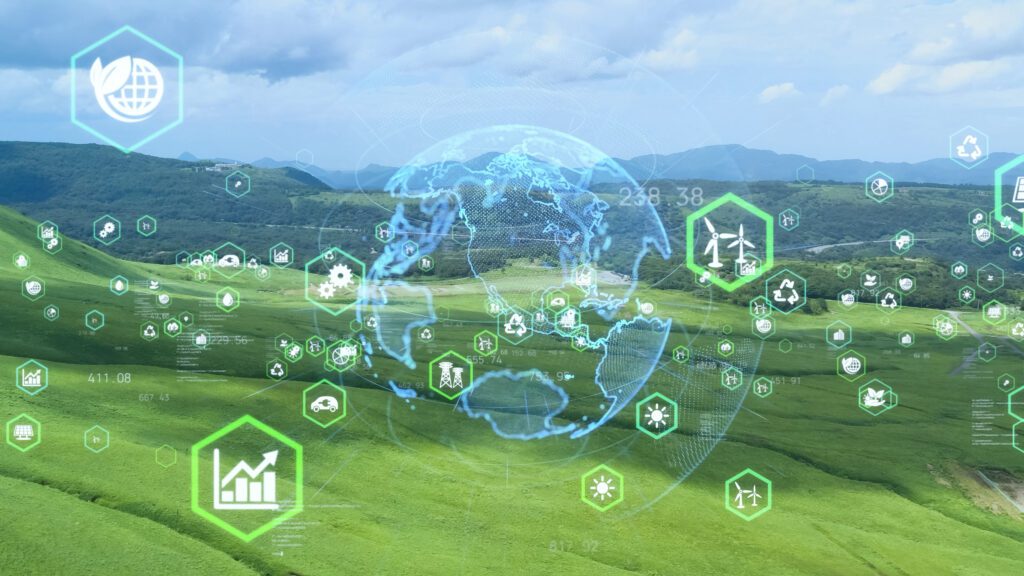With 2025 marking the midpoint of this critical decade in the fight against climate change, and a year that has already seen catastrophic floods and fires, the UK needs to rapidly look at all options to meet net zero and see where exactly the gaps are.
The Government’s growth agenda will pose some challenging trade-offs between the economy and sustainability (new runway at Heathrow, anyone?), so we need to look at how digital technologies can be adopted at a much bigger scale to achieve growth and net zero.
There is no doubt the UK has high ambitions, primarily its commitment to reach net zero by 2050 and its more recent aim to reduce emissions by at least 81 per cent against 1990 levels by 2035. Time, unfortunately, is not on our side: 2024 was declared the hottest year on record, and the first in which global average temperature exceeded the 1.5 °C above pre-industrial levels target that world leaders agreed upon in Paris 10 years ago. Adding salt to the wound, January has already witnessed US President Trump remove the United States from that same Paris Agreement.
Against that inauspicious start to the year, the need for international leadership to galvanise the global climate fight is high, and the UK has an opportunity to take the helm. But to meet its net zero ambitions and act as an international leader, UK policymakers must fully understand and embrace innovative technologies to ensure its own transition toward a zero-carbon future is on track. Fortunately, advancements in digital technology – often from techUK members – provide policymakers with a powerful toolset to hasten that transition to net zero.
Tech as part of the net zero ambition
Digital technology has been fundamental in our progress toward reducing emissions to date, and digitalisation has played a massive part in the UK becoming the world’s first major economy to halve its emissions. Digital tools make other nascent green technologies – like renewable energy generation, electric vehicles, and heat pumps – possible and commercially viable.
While these technologies were being scaled, further innovation occurred that now offers policymakers another bite of the decarbonisation apple. A 2022 report by the World Economic Forum found that scaling digital technologies across key industries like energy, materials, and mobility could reduce global emissions by up to 20 per cent. To offer an example, installing Internet of Things (IoT) technology can provide real-time monitoring and assist human decision-making – from improving building efficiency to optimising resource use.
In 2022, techUK member Farrpoint partnered with government to operate a yearlong trial monitoring the health of the Scottish peatlands – vital for carbon storage and local biodiversity – by installing IoT sensors to provide real-time data on water content and the condition of the peatlands.
Once hard-to-reach places can now be actively monitored and assessed, and restoration efforts appropriately tailored. The use cases extend beyond ecosystem monitoring, from smart meters in households to reduce energy consumption to improved waste and resource management.
The newly created Circular Economy Taskforce should be sure to prioritise digital solutions like AI to reduce and reuse waste. As the saying goes, you can’t manage what you can’t measure; by leveraging digital tools and data, policymakers can implement more targeted and impactful interventions to achieve net zero.
Leveraging AI in the climate fight
A discussion of tech-led decarbonisation must include a discussion of artificial intelligence (AI), and the Government has a unique opportunity to build on its ambitious AI Opportunities Action Plan to harness AI in the fight against climate change. For example, AI can help policymakers and scientists better understand climate threats via improved analysis of large datasets to make more accurate predictions.
In 2023, researchers from the University of Leeds used satellites to monitor Antarctic Sea ice and machine learning to map sea ice loss in 0.001 seconds, a task that was previously labour-intensive. Similar work has been done by an Edinburgh-based company to measure deforestation rates. And Google and its subsidiary DeepMind are leveraging AI to optimise operations both internally and for customers, from improved flood forecasting for 460 million people across 80+ countries to reduced energy usage, including more efficient data centre cooling systems.
Of course, AI’s intensive energy needs are no secret, and the recently announced AI Energy Council will have to fill information gaps regarding how the Government will expand AI in a sustainable manner. techUK looks forward to working with members and government on the 2025 Spending Review to help ensure AI growth does not jeopardise the UK’s decarbonisation agenda.
Policy and regulatory barriers to net zero
To meet this challenge, the Government must make sure policy supports digital innovation to accelerate decarbonisation. While the AI Opportunities Action Plan is a step in the right direction, policy bottlenecks remain. That is why in December, techUK – as part of its work on the ClimateTech Policy Coalition – helped publish its annual report, which outlines opportunities for government to align policy with innovation.
First, government should provide more certainty for industry and the energy sector via clear policy roadmaps. It must also fund critical digital technologies to decarbonise high-polluting industries and leverage improved data collection for more targeted intervention. There are also short-term wins to be had, including setting up a regulatory sandbox for the innovative use of waste products to move toward a more circular economic model.
Final Thought
The UK’s commitment to net zero and confronting climate change is clear, but the challenge in 2025 is to execute those ambitions and show that digital tech can deliver meaningful emissions reductions while making life easier for the public and generating growth that is essential for public services.
Digital technology is a powerful tool in the policymaker’s toolbox to reduce emissions at the scale science demands, and the Government should be bold in adopting a technology-driven climate agenda to ensure we meet our net zero goals.


